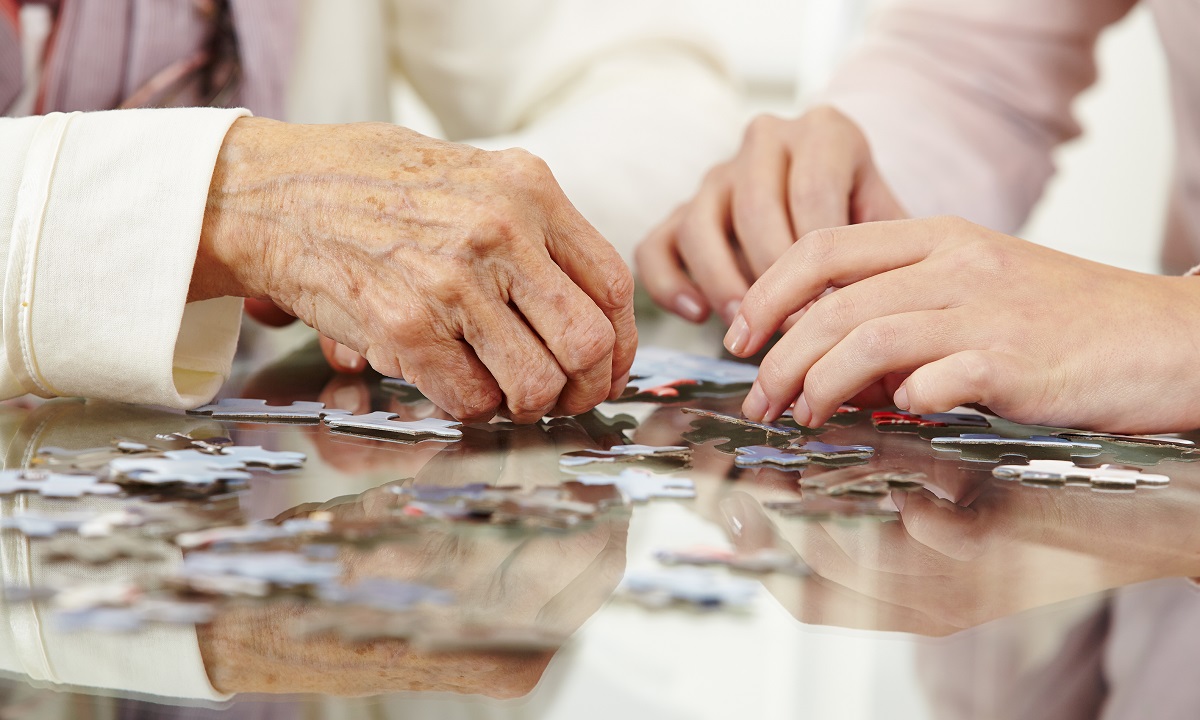Memory, confusion, mood swings – when it comes to the symptoms of dementia, it can be easy to focus on the troubling psychological changes. However, the physical symptoms that go hand-in-hand with many dementia-related illnesses can be just as hard to cope with.
Two of the most alarming physical symptoms associated with dementia are muscle weakness and in severe cases, paralysis – both of which can become an unpleasant reality for people in the mid to late stages of the illness.
So how can dementia lead to loss of movement?
Dementia is not a disease in itself, more a collective term for a range of problems that gradually affect the brain’s ability to function as it once did. And that includes its ability to manage critical neurological functions of the body – one of which is being able to move.
Depending on the type of degenerative condition someone is experiencing, damage caused to the brain happens in different ways. For people living with vascular and frontotemporal dementia, experts agree that muscle weakness and limb paralysis is often due to a series of mini, or large strokes in the brain. Both of these can massively impair someone with a range of physical as well as cognitive damage.
DID YOU KNOW? Doctors used to think that stroke and dementia were unrelated. But research has gone on to reveal that the two are very interlinked.
Why do strokes happen?
Strokes occur when there’s a lack of blood supply to areas of the brain. There are several different ways this can happen, including clogged or damaged blood vessels. The two types of stroke associated with dementia are known as ischemic stroke – a restriction of the blood supply – and TIA (Transient Ischemic Attack) otherwise known as a ‘series of mini-strokes’.
With vascular and frontotemporal dementia, someone may show signs of muscle weakness and coordination problems resulting from stroke. This can mean they have to use a wheelchair, or potentially, with a more severe stroke, they may even be unable to leave their bed.
TIP: Find out more about how interwoven stroke and dementia is in our blog post here.
Will they be able to move again after a stroke?
We all know that rehabilitation after a stroke is a long and arduous process, taking years for someone to regain aspects of speech and movement. But it can happen. Statistics show that 10% of people can gain full recovery post-stroke, and others go on to show only minor impairment. However, those figures don’t take into account the added challenge of having dementia too.
Stroke rehabilitation, especially in the later stages of dementia presents many challenges; firstly, the dementia-related damage to the brain may already be too severe to make progress, and secondly, the person may not be able to fully engage or cooperate in the rehabilitation process due to general confusion, fatigue etc.
But you shouldn’t give up hope. The brain is a miraculous thing, and has a fantastic capacity to surprise us all. For people without dementia, with enough work, the brain can rewire much of the damage caused by stroke. This rewiring is known as ‘neuroplasticity after stroke’, and can see people regaining speech, cognitive abilities and even movement that was lost after the stroke occurred.
The same thing can, to some extent, can happen to people living with dementia. While it’s best to be realistic about your expectations of what might be possible, if your loved one can take part in physiotherapy, or you feel as if they may be responsive to speech exercises, then you could potentially see some improvement.
If you decide to take on some stroke-related rehab, make sure you don’t wait too long before you begin the process. Experts agree that the first six months after the stroke are when the most progress can be made. The sooner you try to start repairing damage, the higher chance the person stands of regaining muscle movement.
FACT: 30% per cent of people who have a stroke go on to develop dementia
Can you recognise the symptoms of a stroke?
While in the latter stages of dementia, it can be tough to recognise stroke symptoms. For the safety and wellbeing of your loved one living with dementia, it’s a great idea after first diagnosis of dementia, to be aware and on the lookout for the following stroke signs – because the quicker it’s caught, the better chance your loved one has of reversing the damage. The advice is to think FAST:
- F – face. Part of the person’s face starts to droop, making it difficult for them to smile.
- A – arms. The person is unable to lift their arms
- S – speech. The person has difficulties with speech, which becomes slurred.
- T – time. It is time to call 999. A person displaying these symptoms must immediately be taken to A&E for treatment.
Could paralysis be associated with other issues?
Some people living in the later stages of frontotemporal, Lewy Body dementia, and Parkinson’s can experience a condition called Akinesia. This is characterised by a sudden loss of muscle movement, leading to paralysis.
Caregivers and family members have described the symptoms of Akinesia as looking rigid, or ‘frozen’. Episodes are said to occur when there’s a severe drop in the chemical dopamine in the brain, which can be caused by degenerative damage, or taking certain medications.
The pneumonic related to Parkinson’s includes Akinesia as one of the symptoms to look out for:
T- Tremors
R – Rigidity
A – Akinesia
P- Postural Instability
If your loved one is experiencing paralysis associated with Akinesia, there are medications you can ask your doctor to prescribe to help ease the symptoms. You can also use physiotherapy to aid the recovery process.
Related article: How does dementia affect mobility?
SHARE
Explore more




